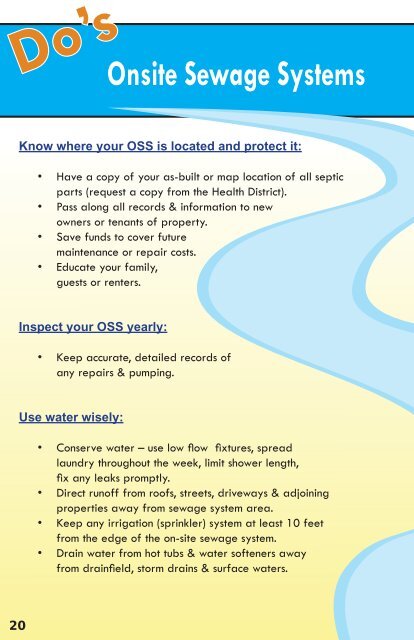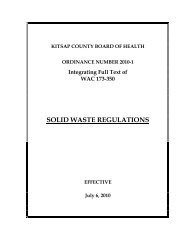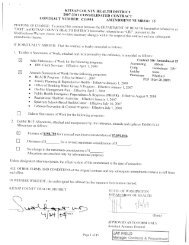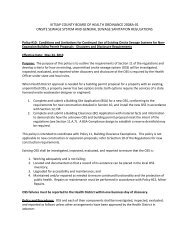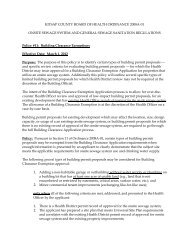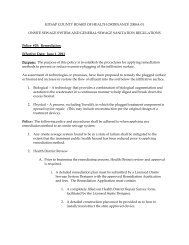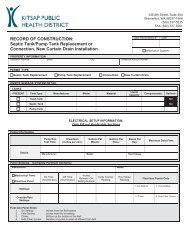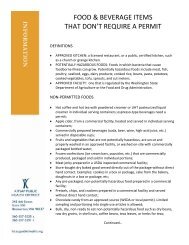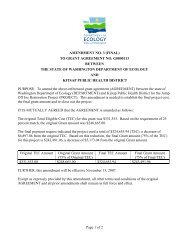Homeowner's Guide to Septic Systems - Kitsap Public Health District
Homeowner's Guide to Septic Systems - Kitsap Public Health District
Homeowner's Guide to Septic Systems - Kitsap Public Health District
Create successful ePaper yourself
Turn your PDF publications into a flip-book with our unique Google optimized e-Paper software.
Do’s<br />
Onsite Sewage <strong>Systems</strong><br />
Know where your OSS is located and protect it:<br />
• Have a copy of your as-built or map location of all septic<br />
parts (request a copy from the <strong>Health</strong> <strong>District</strong>).<br />
• Pass along all records & information <strong>to</strong> new<br />
owners or tenants of property.<br />
• Save funds <strong>to</strong> cover future<br />
maintenance or repair costs.<br />
• Educate your family,<br />
guests or renters.<br />
Inspect your OSS yearly:<br />
• Keep accurate, detailed records of<br />
any repairs & pumping.<br />
Use water wisely:<br />
• Conserve water – use low fl ow fi xtures, spread<br />
laundry throughout the week, limit shower length,<br />
fi x any leaks promptly.<br />
• Direct runoff from roofs, streets, driveways & adjoining<br />
properties away from sewage system area.<br />
• Keep any irrigation (sprinkler) system at least 10 feet<br />
from the edge of the on-site sewage system.<br />
• Drain water from hot tubs & water softeners away<br />
from drainfi eld, s<strong>to</strong>rm drains & surface waters.<br />
20


